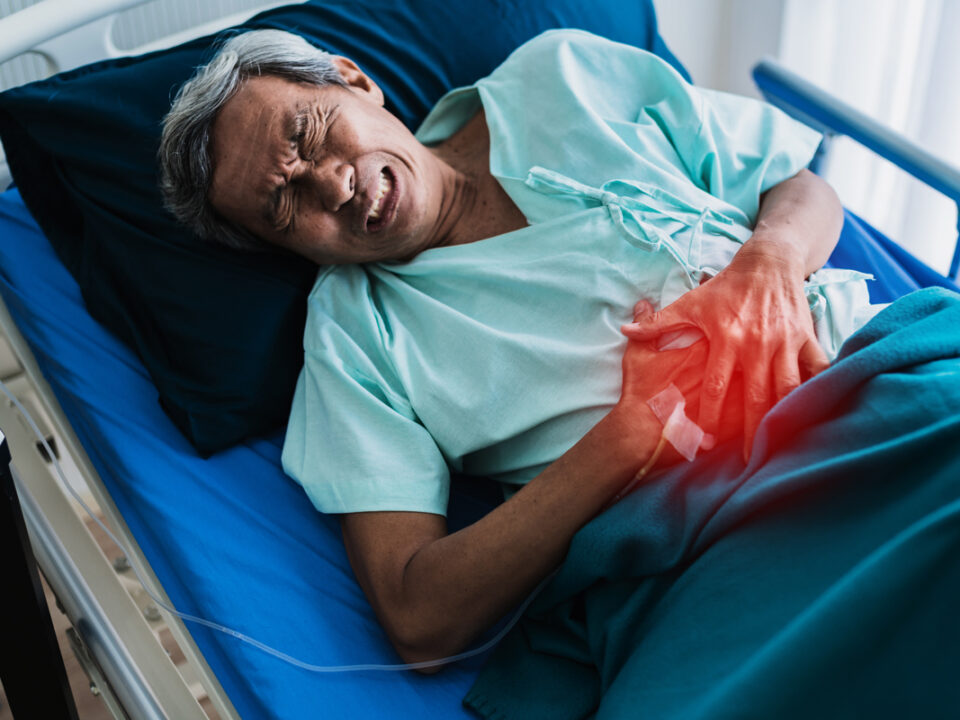
How Hyperbaric Oxygen Therapy helps in treating Hypoxia
22/02/2024
Hyperbaric Oxygen Therapy & Cerebral Palsy
22/02/2024Osteomyelitis, a severe and often debilitating infection of the bone, poses significant challenges in both diagnosis and treatment. Traditional approaches typically involve a combination of antibiotics and surgical intervention. However, in cases where conventional treatments prove insufficient, hyperbaric oxygen therapy (HBOT) emerges as a promising adjunctive option. HBOT involves the administration of 100% oxygen at pressures greater than atmospheric, resulting in enhanced oxygen delivery to tissue. This is what HBOT India has to say.
What is Osteomyelitis?
Osteomyelitis is an infection-related inflammation or swelling of the bone tissues. Bone infections can affect both children and adults and can happen for a variety of causes. A systemic bacterial infection that spreads to the bones, often known as sepsis or bacteria, can result in osteomyelitis. This form typically affects a child’s long bones, such as the femur (thighbone) or humerus, and is most prevalent in infants and young children (upper arm bone). Adult cases of osteomyelitis frequently involve the vertebral bones along the spinal column. Staphylococcus aureus is typically the cause of the blood infection, while other bacteria or fungi may also be to blame. Osteomyelitis is more prone to occur in those with compromised immune systems. People who have sickle cell disease, HIV, or who are taking immunosuppression drugs like chemotherapy or steroids fall under this category. Depending on the cause of the infection, osteomyelitis may start suddenly, slowly, and mildly, or it may develop into a chronic condition. Out of every 10,000 people, 2 to 5 will get osteomyelitis. One of the earliest known disorders and its origins have been established to be more than 250 million years old.
Types
The following are osteomyelitis sub-types:
Acute: The onset of this infection is abrupt. You might have a fever for a few days before experiencing pain in the infected area.
Chronic: Chronic osteomyelitis is an infection of the bones that is resistant to medical care. It results in persistent leakage and bone pain. Occasionally, persistent osteomyelitis goes undiagnosed.
Vertebral: The spine is affected by this type. It results in persistent back pain that worsens as you move. It seldom results in a fever. Spinal bone infections are more common in people who reside in nursing homes, abuse intravenous medications, or are receiving dialysis.
Causes
Osteomyelitis develops when germs travel via your blood from adjacent sick tissue or an open lesion and land in bone, where they multiply. Osteomyelitis is frequently caused by infections, or Staphylococcus aureus bacteria. A bone infection can occasionally be brought on by a fungus or other microbe. Staphylococcus aureus is the etiological pathogen in 30% to 60% of human osteomyelitis cases, while staphylococci as a group are responsible for about 75% of cases. Osteomyelitis is an infectious disease that affects the bone and bone marrow. Osteomyelitis typically results from a traumatic or hematogenous cause. Children under the age of 16 are most frequently affected by the hematogenous spread of germs, which causes hematogenous osteomyelitis.
The following conditions increase your risk of developing osteomyelitis:
- A hip replacement is an artificial joint
- disorders including sickle cell anaemia or blood infections
- Diabetes, particularly a foot ulcer brought on by diabetes
- Bone implants made of metal, like screws
- Pressure wounds (bedsores)
- Recent bone surgery or bone fracture
- Traumatic wound or injury
- Inadequate immune system
Symptoms
The infected area may also be red, heated, swollen, and painful to the touch. As further indications of osteomyelitis include:
- Drainage (yellow pus)
- Irritability or sluggishness
- Painful and restricted movement
- Decrease in appetite
- A lower back aches
- Vomiting and nausea
- Chills
Diagnosis
Your doctor may recommend one or more of the following tests after evaluating your symptoms and conducting a physical examination:
- Complete blood counts (Cb Cs) in blood tests look for indicators of infection and inflammation. An examination of your blood culture checks for germs.
- Images of your bones, muscles, and tissues are produced by imaging tests like X-rays, MRI’s, CT scans, and ultrasounds.
- Bone scan: During an imaging scan, a bone scan employs a little amount of harmless, radioactive material to find infections or fractures.
- Biopsy: A needle biopsy is conducted by your healthcare professional to obtain samples of fluid, tissue, or bone that will be examined for indications of infection.
Treatment
Healing from a bone infection might take an exceptionally long time. If you begin therapy within three to five days after first seeing symptoms, the infection can go away more quickly.
Treatments include:
Antibiotics: Antibiotics eliminate microorganisms that cause infections. Antibiotics may be required for four to eight weeks, beginning with intravenous (IV) antibiotics administered in the hospital for one or two weeks. After that, you will take drugs orally for a few weeks. Antibiotics may be needed for months to treat chronic illnesses.
Antifungals: You may need to take oral antifungal drugs for months to treat fungal infections. Your healthcare professional will use a tiny needle to aspirate the pus and liquid from the abscess. Non-steroidal anti-inflammatory medications (NSA-IDs) are used to treat inflammation and pain. In some cases, surgery is required to treat bone infections. After surgery, antibiotics will be required. the following surgical options:
Bone surgery: The infected, dead tissue and bone are surgically removed (derided) by your healthcare practitioner. Bone abnormalities could develop because of this surgery.
Those who have vertebral osteomyelitis may require spine surgery. By doing this operation, you can prevent vertebrae from collapsing and harming your spinal cord, nerves, and other nervous system components.
Hyperbaric Oxygen as Effective Medicine for Osteomyelitis
By administering pure oxygen under high pressure, Hyperbaric Oxygen Treatment (HBOT) increases the amount of oxygen in the blood and tissues (hyperoxia) (about 2-3 atmospheres). One method of treatment involves being exposed to pure oxygen (O2) concentrations at high atmospheric pressures using hyperbaric oxygen therapy (HBOT). According to the Undersea and Hyperbaric Medical Society, this pressure may be greater than or equivalent to 1.4 atmospheres. For all current UH-MS-approved uses, patients may only inhale oxygen when restrained in a space with a minimum air pressure of 2 ATA. For hyperbaric medicine to work, there needs to be a pressure environment that is greater than the air pressure at sea level. Hyperbaric oxygen treatment (HBOT) has been shown to rejuvenate bone cells and encourage natural development. Collagen is needed to fill up the spaces between broken bones so they can heal, and HBOT promotes its production. Hyperbaric oxygen may also promote the growth of osteoblasts and osteoclasts, two cell types necessary for breaking down old, dead bone and forming new bone.
Most existing animal data, human case series, and non-randomized prospective trials point to the safety and improved infection resolution rates of adding hyperbaric oxygen (HBO2) therapy to normal surgical and antibiotic management in previously resistant osteomyelitis. HBO2 treatment should therefore be regarded as an American Heart Association (AHA) Class II recommendation in the treatment of refractory osteomyelitis. HBO2 therapy can be categorized as an AHA Class IIb therapy in cases of uncomplicated extremities osteomyelitis or situations where severe patient morbidity or mortality is unlikely to occur. Most of the time, HBO2 therapy that is combined with antibiotics that are targeted to a particular culture and are started quickly after a thorough surgical debridement yields the greatest clinical results. Typically, 2.0-3.0 atmospheres of absolute pressure are used to administer HBO2 therapy daily for 90 to 120 minutes (ATA).
HBOT can help bone problems mend by encouraging osteoblasts as well as osteoclasts. This facilitates the resorption of old bone and encourages the growth of new bone. Furthermore, HBOT encourages the formation of new blood vessels, guaranteeing the growing bone with a steady supply of nutrients, including oxygen. This blood artery network also helps to maintain osteoclast function and provides the area with white blood cells that combat infections. A bacterial infection called osteomyelitis usually affects both the outside layers of bone and the inside of the bone marrow. Staphylococci are a common form of bacteria that can cause anything from meningitis to acne. Chronic osteomyelitis may arise if the acute form of the disease is not completely healed by medical intervention. Chronic osteomyelitis may eventually emerge or develop after an acute form if the acute form is not completely healed by treatment. When medical intervention or antibiotic treatment failed to alleviate a bone infection, the condition is referred to as resistant osteomyelitis. The lack of oxygen in the tissues caused by osteomyelitis makes treatment more challenging. HBOT, which delivers forced oxygenation, helps treat this illness in addition to antimicrobial drugs and/or surgery. Hyperbaric oxygen therapy supports the immune system and aids in the formation of new bone. Sometimes HBOT can draw an exact line that helps the surgeon remove diseased or dead bone from both wounds and bones.
By providing sufficient oxygen to fibro-blasts, the cells that make up connective tissues, HBOT facilitates the repair of hypoxic tissue. Oxygen is needed for osteoclasts to function, which break down dead bone, and for the formation of new blood vessels, which need sporadic oxygen pressures of 30 to 40 mm-Hg. HBOT stops microorganisms by acting bacteriostatically. Neutrophils require a PO2 of 30 to 40 mm-Hg in order to combat pathogens. A number of quinolones, aminoglycoside antibiotics, and sulfonamides are more efficacious when taken with HBOT. By stopping polymorphonuclear (PMN) leukocytes, or white blood cells, from adhering to injured blood vessel linings, it exacerbates the inflammation that usually occurs after surgical treatment for refractory osteomyelitis.
89.5% of patients who underwent HBOT treatment for 40 cases of chronic osteomyelitis by Moorey et al. (1979) no longer exhibited any clinical signs associated with osteomyelitis.
An analysis of individuals with osteomyelitis and sternal infections who had hysterectomies and cardio-thoracic surgery between 2002 and 2009. HBO2 therapy was administered supple-mentally to six out of the twelve patients who received debridement and antibiotic therapy. Each 120-minute session consisted of three phases: decompression, oxygen breathing, and compression. The compression and decompression rates were 0.1 ATA per minute with ambient air. All patients used a face mask that was correctly fitted and secured with head straps for ninety minutes of 100% oxygen breathing at 2.5 ATA during the oxygen breath phase. HBO2 has a synergistic effect with certain drugs, prevents infection, and accelerates wound healing by an increase in tissue oxygen partial pressure. In this study, all patients with post-cardio-thoracic surgery-related osteomyelitis and external infections who also received HBO2 therapy recovered well.




